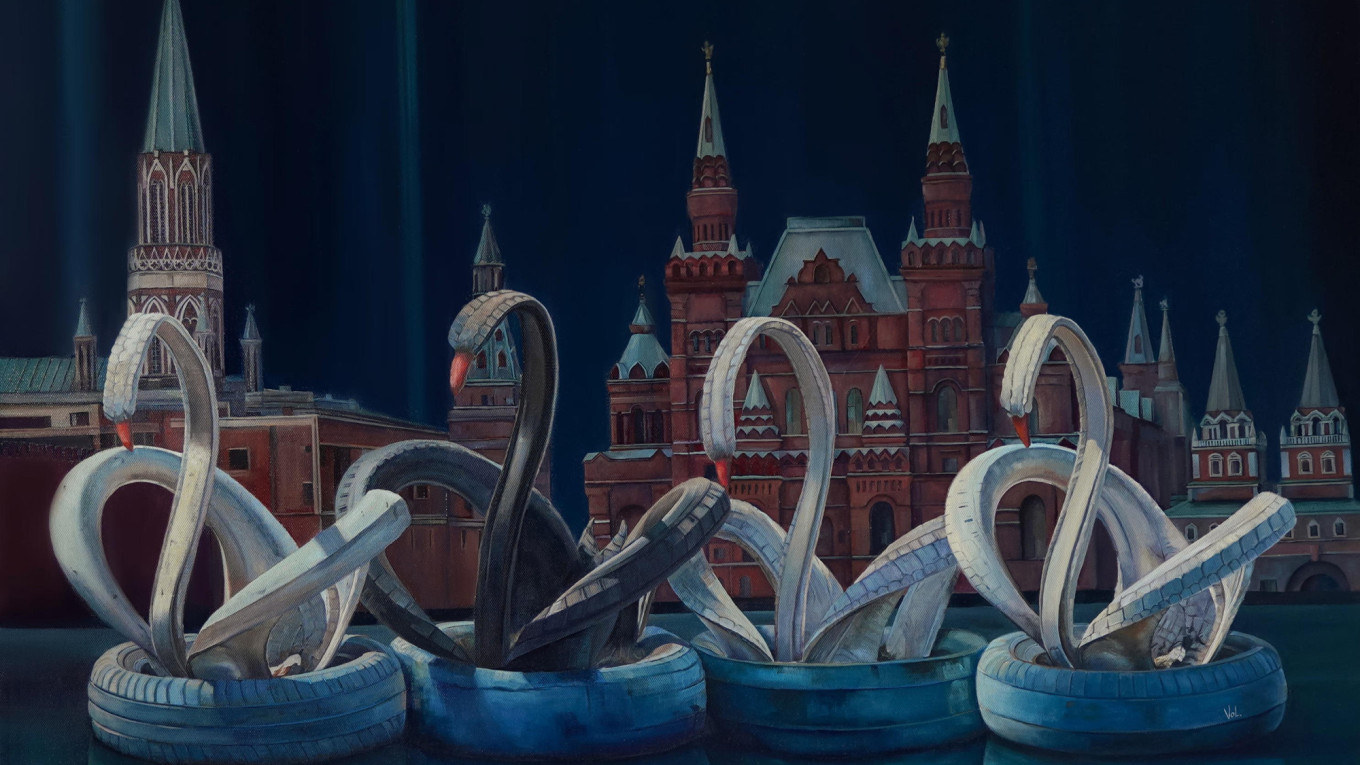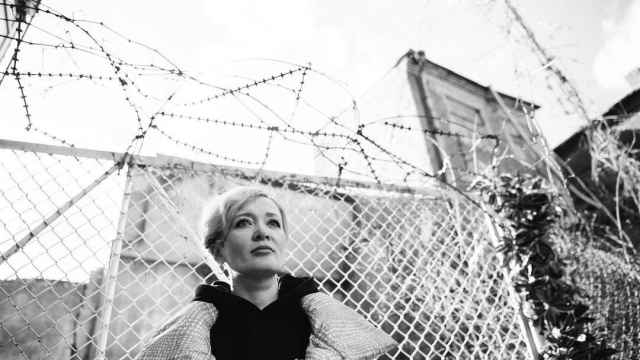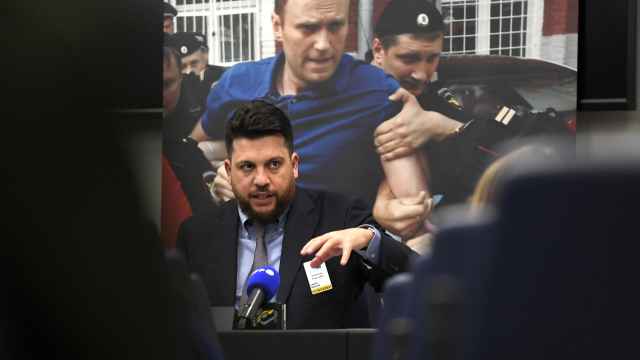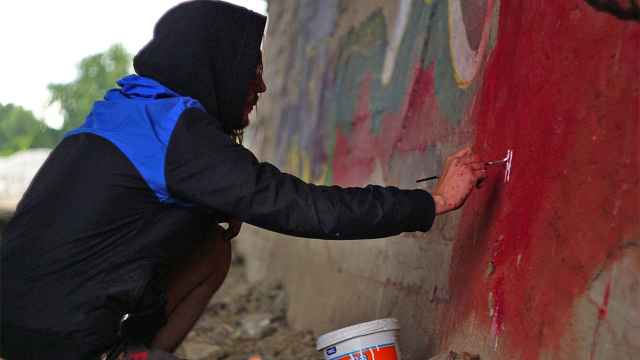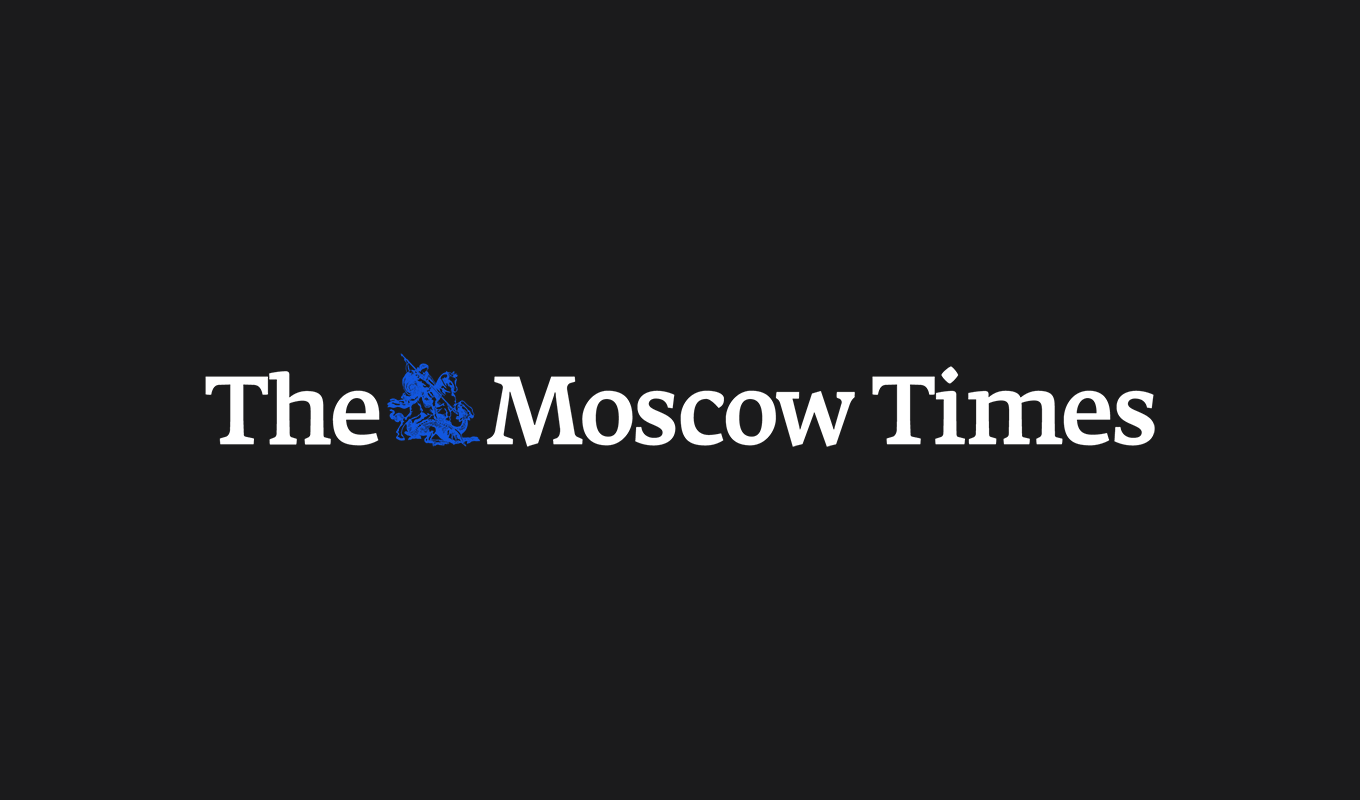Artists Against the Kremlin is an exhibition of Russian-speaking artists organized by All Rights Reversed gallery with the support of The Moscow Times at De Balie arts center in Amsterdam.
The more than 100 paintings, installations, photographs and sculptures — most of them new — on display were created by artists who, for the most part, have long declared their opposition to the Russian regime. Two and a half years after Russia’s invasion of Ukraine, this art is seen less as a protest than as a testimony. Or, rather, as a diagnosis — and in some cases, a confident prognosis.
During the feast of the Babylonian king Belshazzar, “מְנֵא מְנֵא תְּקֵל וּפַרְסִין” (“Mene mene tekel upharsin” — “mina, mina, shekel, half a mina,” or “numbered, weighed, divided”) was written by an unknown hand on the wall. And Cyrus destroyed Babylon.
Today, “Mene tekel upharsin” is written on an electronic scoreboard under the unmistakable silhouette of the Kremlin wall’s battlements (Sergey Mongayt, “Writings on the Wall”). There is some consolation in the fact that this work was created in the same city where Rembrandt painted “Belshazzar’s Feast.” But our Babylon is still standing, and victory over absolute evil is still in dreams not yet realized.
“We are faced with a real pile of lies,” says Serafima Bresler, an artist who until relatively recently taught at the British Higher School of Art and Design in Moscow, in her 2020 work of the same name. But already a year ago, as a student at Hamburg's HFBK (University of Fine Arts), she and fellow students and artists from Ukraine, Russia and Belarus created the “Cultural Integration Initiative” project to help refugees fleeing the war in Hamburg.
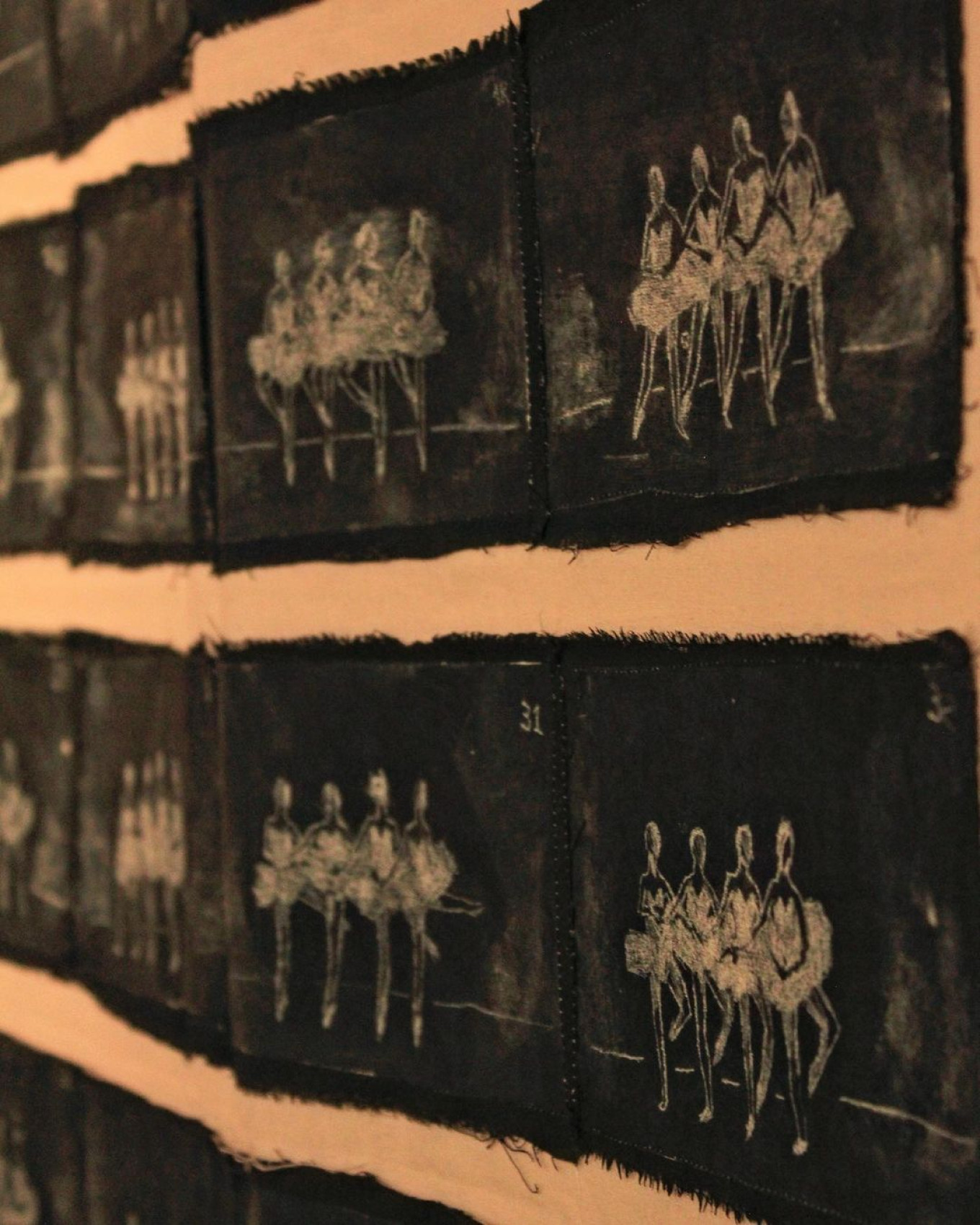
Her canvas on display at De Balie, an endless strip going all the way up to the ceiling, resembles a photographic film of snapshots. These are printed photographs: frame-by-frame moments from the “Dance of the Little Swans.”
Philippenzo, another artist in the exhibition, also had a dream of “Swans” that was somehow realized in his art — the installation “Swan Lake,” shown in 2019 in Yekaterinburg: a painted TV screen showing Pyotr Tchaikovsky’s iconic ballet with the text “For an endless twenty years / We've been looking forward to the ballet."
After the beginning of the war, in his native Volgograd, Philippenzo created the mural “Tsink Nash” (“Zinc is Ours,” referring to the zinc coffins used to transport dead Russian soldiers) — at that time, something like this was still possible — for which he was fined 80,000 rubles.
For “Izrossilovanie” (a combination of the Russian words for “rape” and “Russia”) — a piece of graffiti that appeared on Russia Day 2023 under Elektrozavodsky Bridge in Moscow — Philippenzo was arrested for 15 days, followed by another 15 days. He finally managed to slip out of the embrace of his native country when he was released on the eve of his interrogation.
It was “Izrossilovanie” that I was reminded of, watching how, a couple of hours before the exhibition vernissage, the artist was putting the finishing touches on a black-and-white canvas with cemetery crosses, on which an oblique crossbar transforms the Orthodox Christian cross into the letter Z.
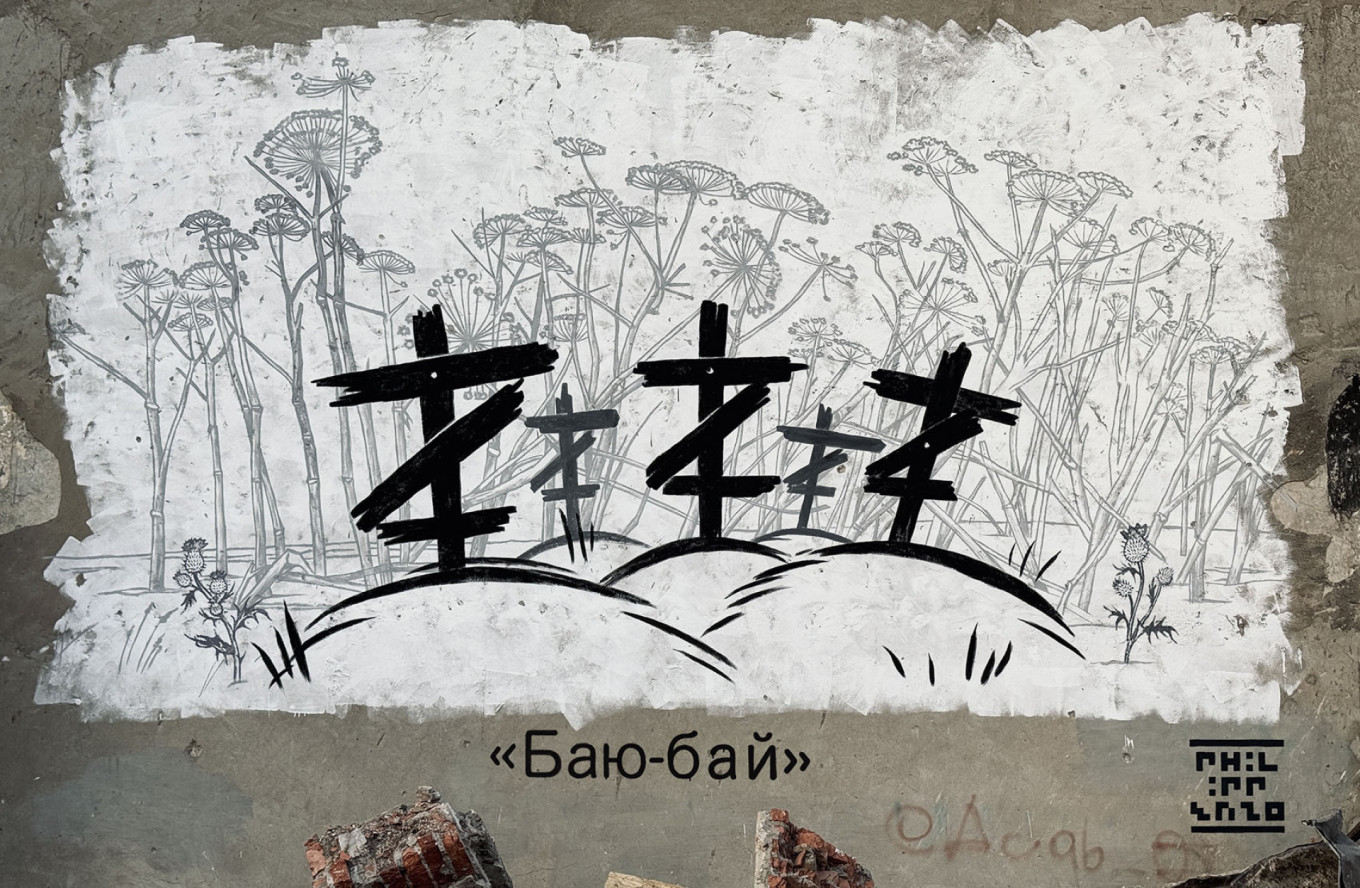
On June 12, 2022, when everyone saw a photo of “Izrossilovanie” on social media, it sparked more than just delight. Many did not hide their skepticism about whether creating this graffiti was even possible. “This is definitely photoshopped,” wrote everyone who was not lazy. And they were wrong.
“That spot is not the most frequented,” the artist explained when, having met him in Amsterdam, I awkwardly asked how it happened. “And it was also nighttime. Two to two and a half hours was enough for me to do everything.”
“Resistance art is a symptom: when this art begins, it is a sure sign that the sick regime is doomed and dying,” said Linor Goralik, one of the many participants in the exhibition. Goralik’s horror “icons” flank the video for “Putin’s Ashes” by Pussy Riot founder Nadya Tolokonnikova. While the viewers caress Nadya's delicate knees in net stockings, her hand deftly fills pharmacy vials with the product of the combustion. All by herself.
Among the artists on display, in addition to the authors mentioned above, are Andrei Bilzho (everyone pictures his own heroes in his head when looking at his drawing “Kiss of the Devil”), Victor Melamed, Mikhail Ray, Danila Tkachenko, Slava Ptrk, Artem Loskutov, Vladlena Sandu, Alexey Kovalchuk...
And many artists are exhibiting under pseudonyms that say little about them: olo.olooloolo, Kungfuct, Pomidor, Party of the Dead, Igor Ost, artisterror, BFMTH, K.Hell, Kuril What, AXYXY...
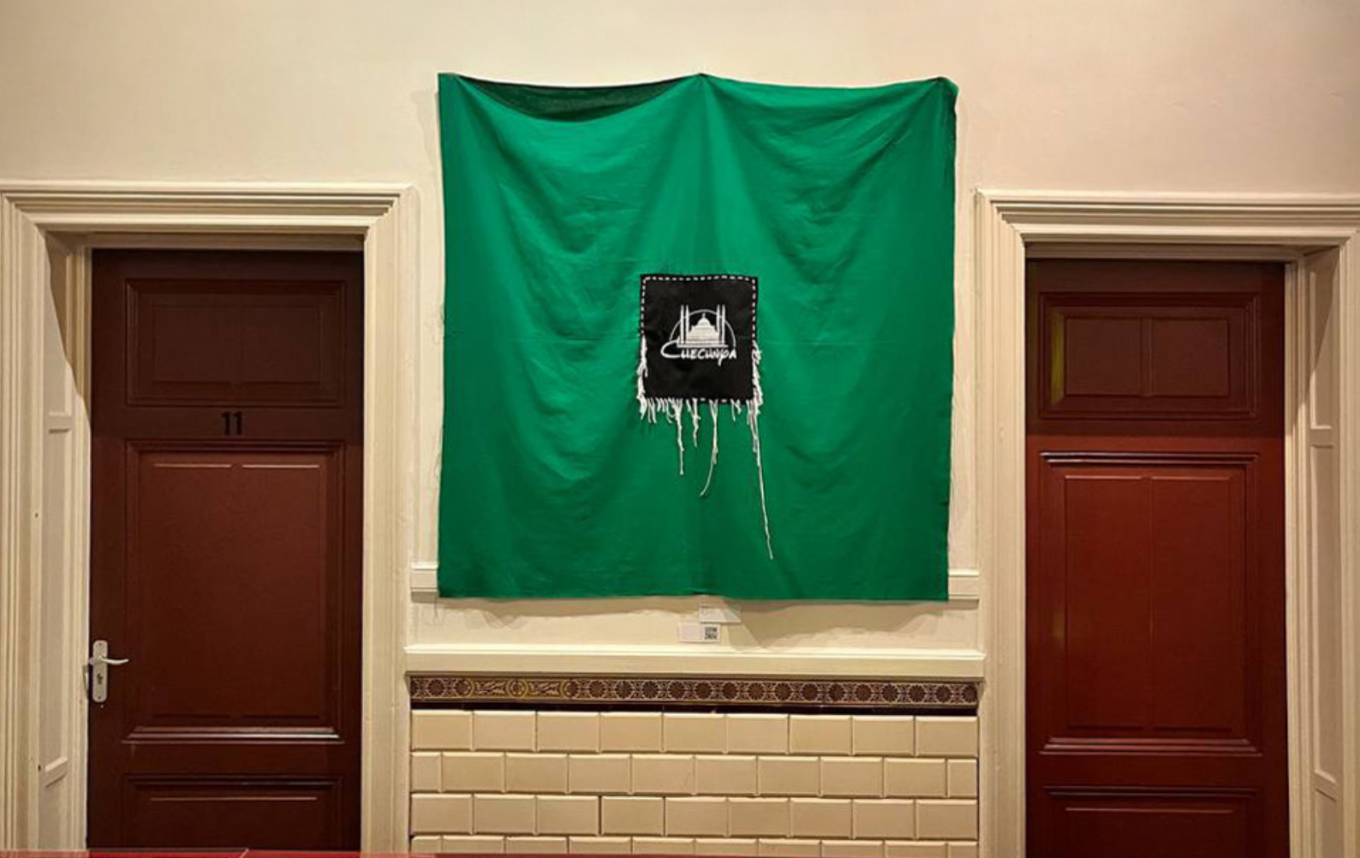
Among them is the curator, who acted as an exhibitor at the same time. His unmistakable “A Little Country” is about one fearsome republic living inside Russia according to its own laws. A mosque in the style of the Hagia Sofia (a mosque just like it was built not so long ago in the capital of this republic) on a bright green square cloth brings to mind the unapologetically politically correct Brodsky — “Green only on the banner of the Prophet” from “Journey to Istanbul.” And of course, one cannot forget about the woven “paintings” of Soviet nonconformist artist Timur Novikov.
The exhibition as a whole confirms the truth: old ideas live and triumph, at least by virtue of their validity and eternal, alas, relevance.
I do not know who exactly hides behind the pseudonym Kastuś Kalinoŭski (the name of the hero of the January Uprising of 1863-1864 in the lands of the former Polish-Lithuanian Commonwealth against the Russian Empire), but his porcelain invalids (“Soldiers,” from the “Sad Toys” series) refer, of course, to the sculptures of Ukrainian-Soviet avant-garde sculptor Vadim Sidur, whose centenary we have just celebrated.
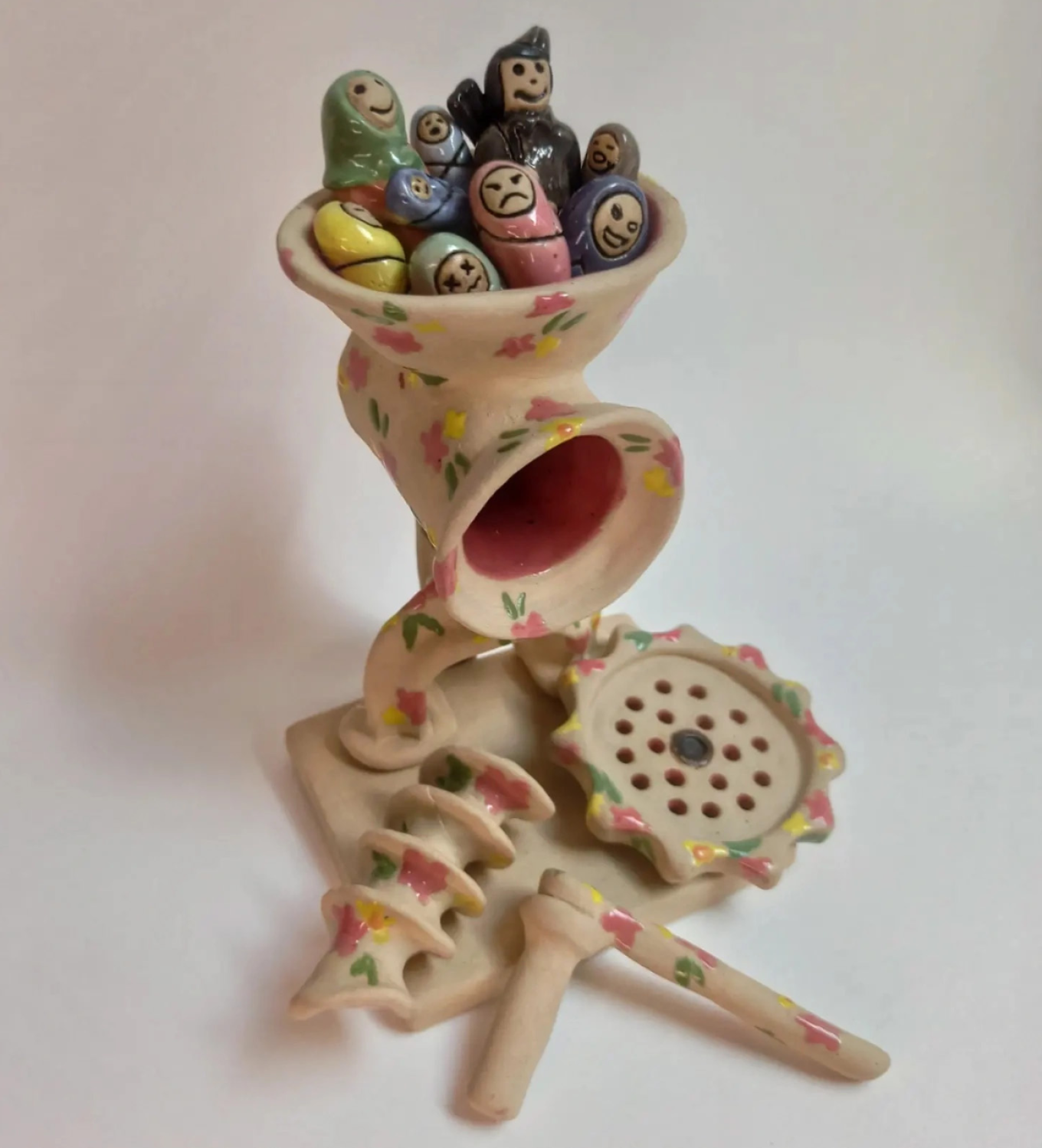
And the porcelain meat grinder with babies in diapers (Tasya Asya, “Original Debt to the Russian Federation”) refers to “The Wall,” Alan Parker’s film set to the music of Pink Floyd. That film once shocked the world. But more than 40 years have passed, and society has gotten used to it.
The drawings of Sasha Skochilenko, who, on the eve of the exhibition’s opening, was fortunately among the political prisoners exchanged by Putin for murderers and terrorists, also inadvertently refer to a sad page from Russian art history (and the country’s history).
Sentenced to seven years in a penal colony for spreading “fakes” about the military — by swapping supermarket price tags with anti-war leaflets — Skochilenko is to some extent an artist by chance. She studied directing at the Russian State Institute of Performing Arts and, before this whole story, was professionally involved in music and wrote poetry.
She didn’t start to draw in earnest until she was imprisoned. Sasha’s mother says they even gave her daughter colored pencils, but not right away, and only six colors. And so everything was put to use, including diluted paste from gel pens.
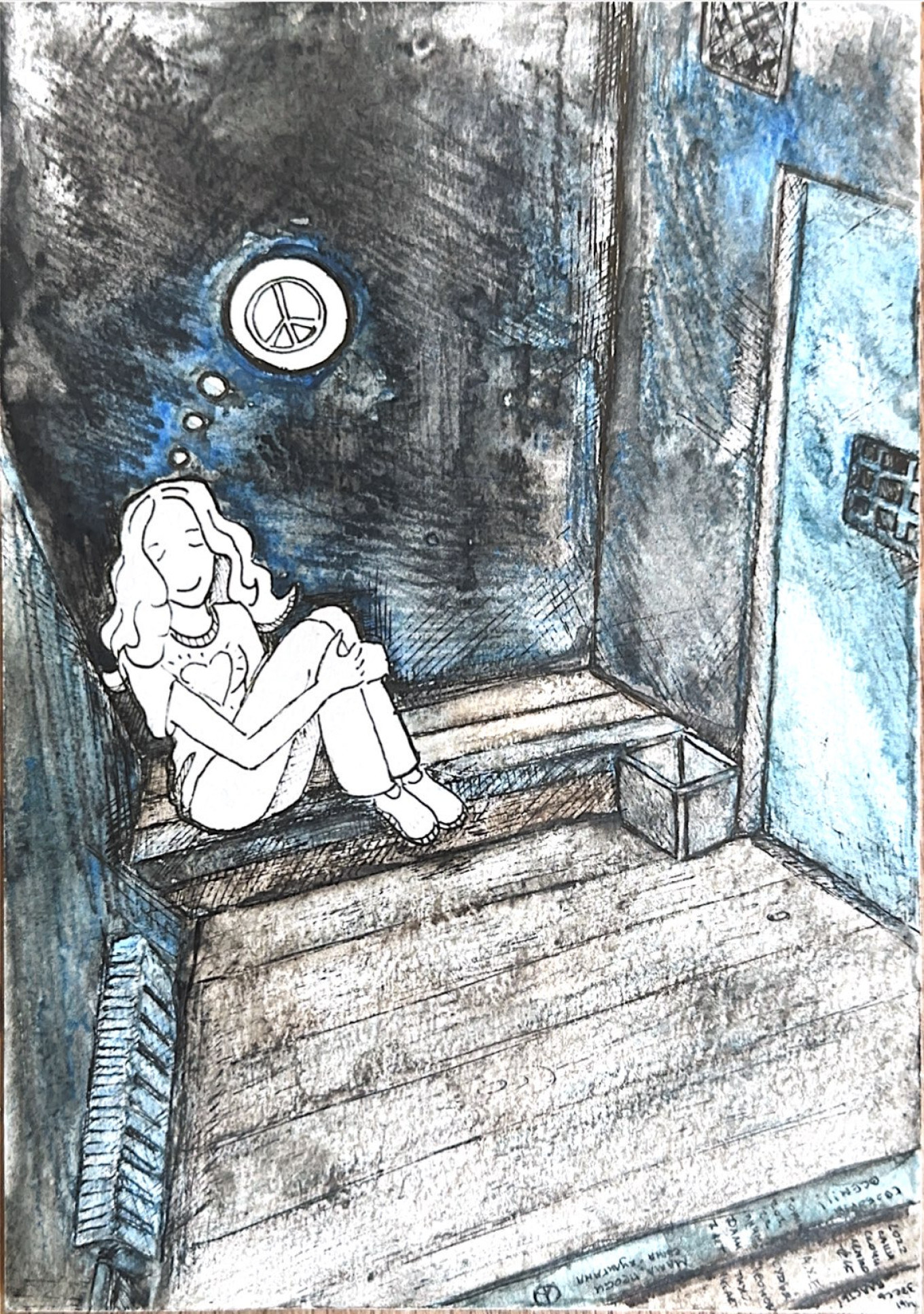
Obviously, despite all the abuses prisoners face today, the conditions in which Sasha found herself can hardly be compared to those in which Soviet nonconformist painters Boris Sveshnikov and Ülo Sooster, who were even younger at the time of their imprisonment than Sasha, created their graphic evidence of total gulag humiliation in the 1940s and 1950s.
It was forbidden to draw in those camps. When a guard snatched a pack of Sooster’s drawings and threw them into the fire and Sooster pulled them out, he got his front teeth knocked out.
Sooster’s 100th birthday, by the way, is in October. I’m not comparing those horrors to these — but I can't help but notice a self-evident trend.
Artists Against the Kremlin is on display at De Balie until Sept. 3. Admission is free. More information here.
A Message from The Moscow Times:
Dear readers,
We are facing unprecedented challenges. Russia's Prosecutor General's Office has designated The Moscow Times as an "undesirable" organization, criminalizing our work and putting our staff at risk of prosecution. This follows our earlier unjust labeling as a "foreign agent."
These actions are direct attempts to silence independent journalism in Russia. The authorities claim our work "discredits the decisions of the Russian leadership." We see things differently: we strive to provide accurate, unbiased reporting on Russia.
We, the journalists of The Moscow Times, refuse to be silenced. But to continue our work, we need your help.
Your support, no matter how small, makes a world of difference. If you can, please support us monthly starting from just $2. It's quick to set up, and every contribution makes a significant impact.
By supporting The Moscow Times, you're defending open, independent journalism in the face of repression. Thank you for standing with us.
Remind me later.



